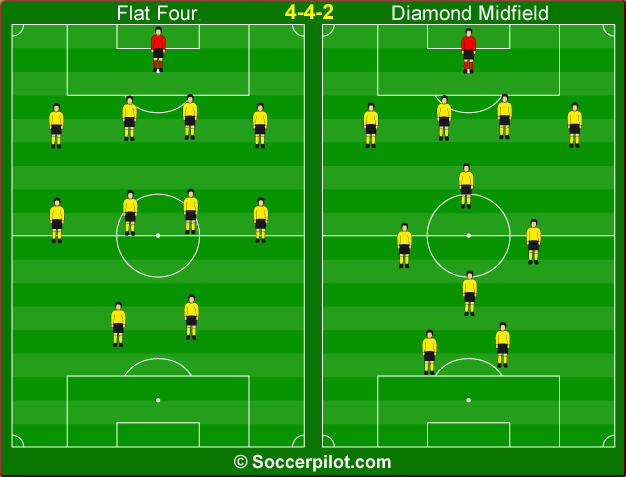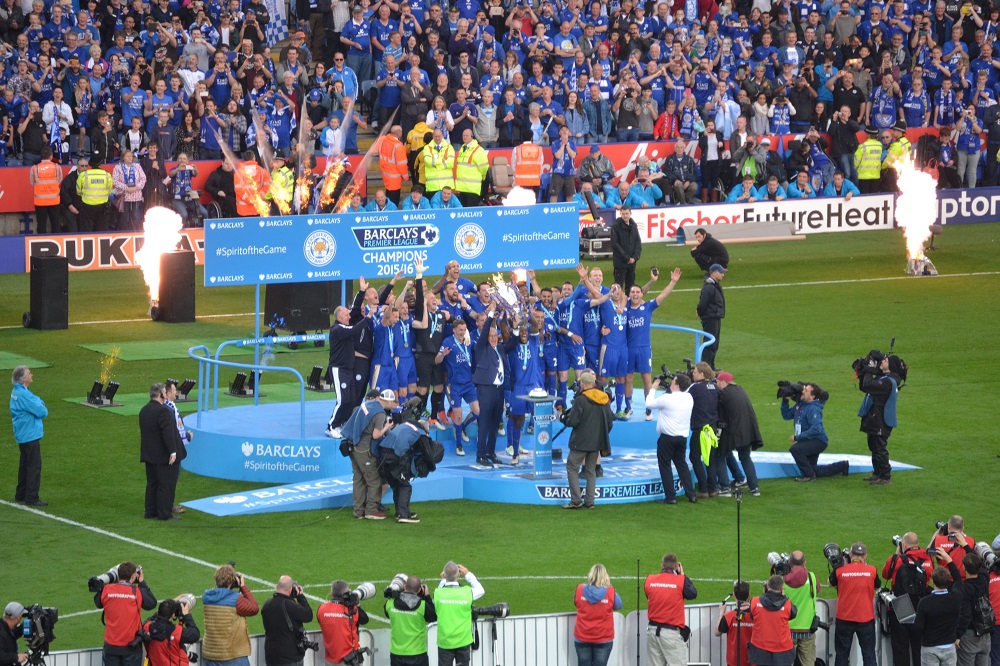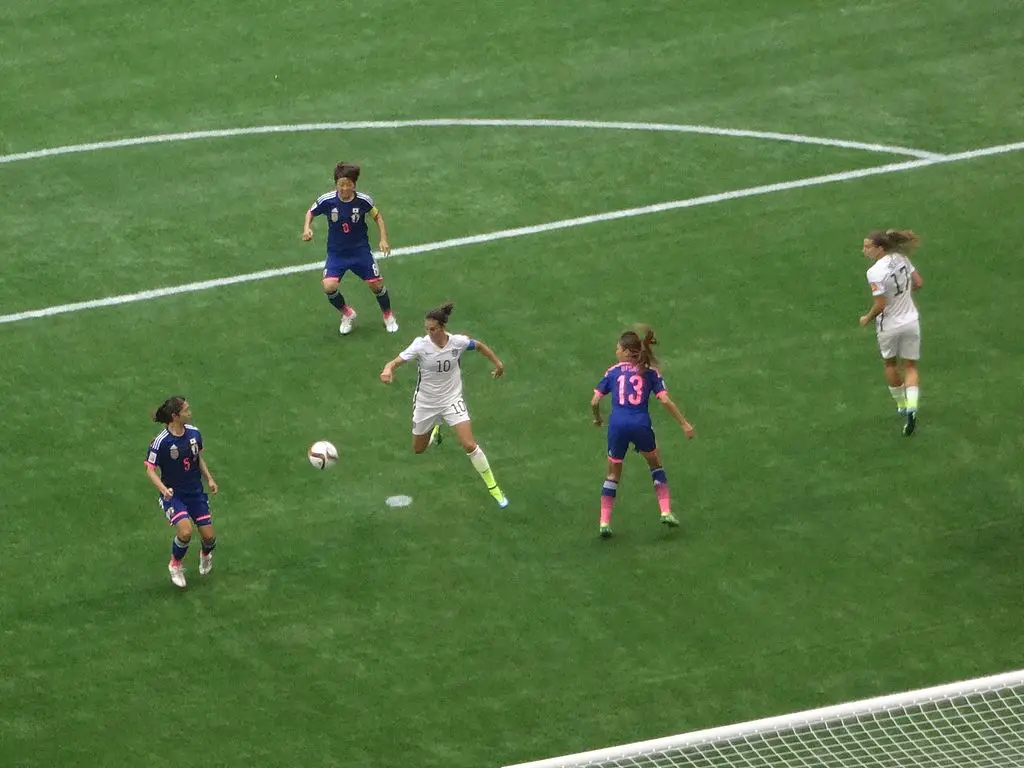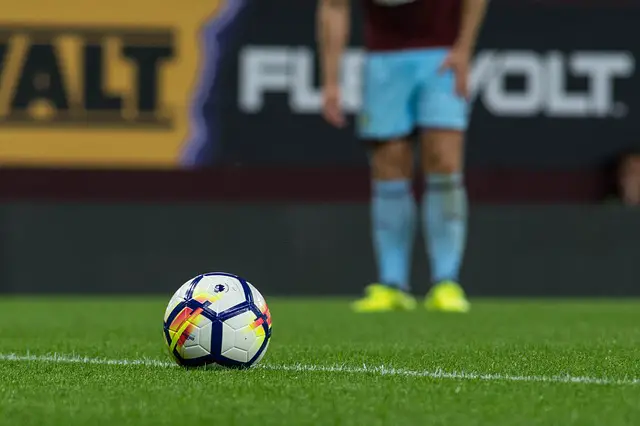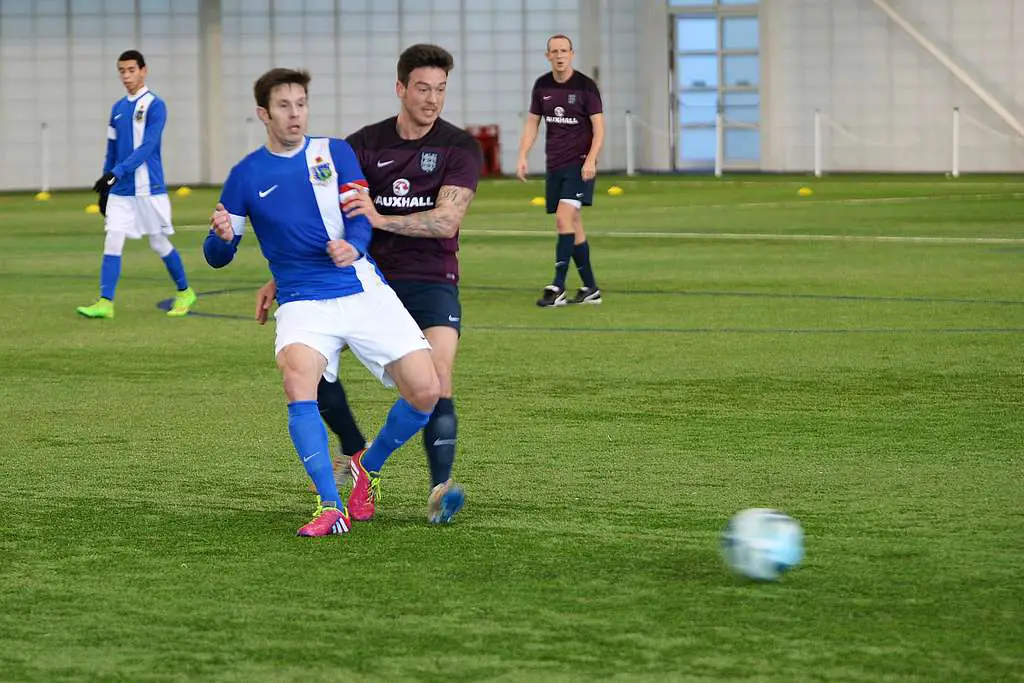
We’ve written about how watching soccer, both pro games on TV and live games local to you, can help you become a better player.
This article will dig a little deeper into one specific position that requires the combination of many advanced techniques and dispositions as a player: central midfield.
Why Is Center Midfield a Hard Position in Soccer?
Center midfield is often considered one of the most challenging positions in soccer. CMs are often referred to as the engine room of the team, responsible for orchestrating both the offensive and defensive aspects of the game. Their role demands exceptional levels of stamina and awareness, as they are required to cover a significant amount of ground, tracking back to defend and pushing forward to create scoring opportunities. Even more difficult is the fact that due to their position in the center of the field, they must stay aware of and play the ball in all 360 degrees.
What sets central midfielders apart is their ability to set the tempo of the game. They must make crucial decisions about when to control the pace and when to be aggressive, all while maintaining composure under pressure. Any loose touches or sloppy passes in the center of the pitch can lead to turnovers and dangerous counter-attacks. Center midfield requires a well-rounded skill set, including fitness, positioning, defending, passing, and attacking prowess.
So knowing this about the position, what specifically can you look for when watching more experienced center midfielders play?
1. Constant Movement
One of the key aspects to learn from watching center midfielders is their ability to maintain constant movement throughout the game. Central midfielders are constantly on the go, covering vast areas of the field. Their movement isn’t aimless; it’s purposeful. Observe how they shuttle between defensive and attacking positions, seamlessly transitioning from offense to defense and vice versa. This constant movement serves multiple purposes: it helps them create passing lanes, provide support to teammates, and disrupt the opposition’s game plan. Pay attention to their off-the-ball runs, how they position themselves to receive passes, and their agility in evading opponents. By studying their movement patterns, you can learn how to stay engaged and effective throughout the game, ensuring you’re always in the right place at the right time to make an impact on the pitch.
2. Being Aware of Your Surroundings
One of the most valuable lessons you can glean from watching center midfielders is their remarkable awareness of their surroundings. These players have a knack for keeping their heads up and their eyes constantly scanning the field. As you observe them, take note of how they frequently look over their shoulders, not just to check for nearby opponents but also to assess the positioning of their teammates. This 360-degree awareness enables them to make quick decisions and maintain possession even in tight spaces. They rarely have their heads down, and this allows them to anticipate pressure and incoming passes.
Additionally, pay attention to how center midfielders use their peripheral vision to track the movement of players in their blind spots. This skill enables them to receive the ball under pressure, knowing where to distribute it next. By emulating this awareness in your own game, you can improve your ability to maintain better control of the ball, spot passing opportunities, and avoid unnecessary turnovers. Being aware of your surroundings, just like elite central midfielders, can significantly elevate your effectiveness as a soccer player.
3. How They Take their First Touch
The best central midfielders excel at perfectly-weighted first touches that keeps the ball close, minimizing the risk of losing possession. Be sure to watch how they open up their body and receive passes with their back foot, allowing them to quickly assess their options and maintain a wide field of vision. This also enables them to pivot away from pressure and distribute it efficiently. Learning from their first-touch mastery can enhance your ball control, composure under pressure, and versatility on the field, making you a more reliable player with a greater ability to create space and time during matches.
4. Playing Simple vs. Risk Taking
Watching center midfielders can teach you the delicate balance between playing simple and knowing when to take calculated risks. These players have a remarkable ability to read the flow of the game and make decisions based on the situation. Pay attention to how they often opt for short, accurate passes to maintain possession and keep the team’s rhythm. However, they also recognize when the opportunity arises to make a more ambitious pass that can break the opposition’s lines or create a scoring chance. Studying this aspect of their game can help you understand the importance of adaptability and decision-making. Learning when to play it safe and when to take calculated risks will make you a more effective and versatile midfielder, capable of influencing the game in various ways.
5. Communication and Coordination with Teammates
Center midfielders excel with communication, constantly providing instructions and support to their teammates and fostering cohesion within the team. They use verbal instructions and gestures to guide positioning and movements and also possess a deep understanding of their teammates’ tendencies, enabling them to efficiently link up play between different areas of the field. Their ability to establish a passing rhythm and dictate the tempo of the game enhances teamwork. Learning from their communication and coordination skills can make you a more effective player, promoting better synergy with your teammates, both on and off the ball.image credit
